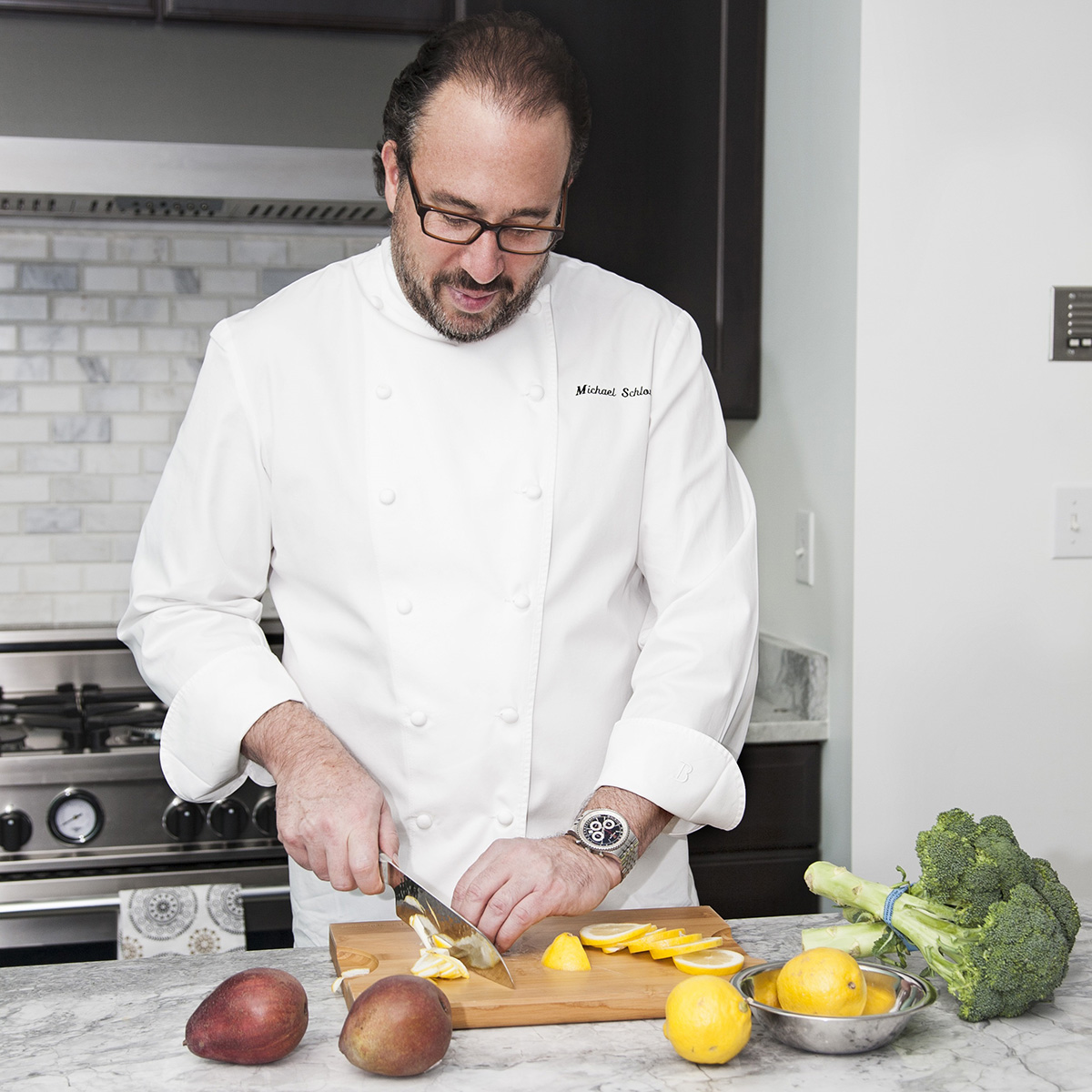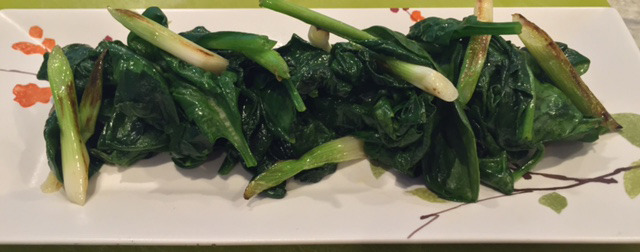What Boston Chefs Eat for Passover
Michael Schlow, Rachel Klein, and Avi Shemtov share insights into the culinary traditions of the Jewish festival, and provide a favorite recipe.

Green beans, from chef Avi Shemtov. / Photo provided
Passover, a springtime celebration in the Jewish faith tradition, commemorates the Israelites’ escape from Egyptian slavery. But like many religious-based holidays, these days it’s typically observed as a family affair, with a healthy spread of seasonal food on the buffet table.
And the festival is rooted in culinary traditions. A well-known passage from the story of Passover notes that after the Pharaoh granted them their freedom, the Children of Israel left in such a rush that their bread hadn’t risen—hence the ban on unleavened bread throughout the eight-day celebration, and the matzo lining local grocery store shelves.
Passover starts with a seder dinner, where families share a meal and read from the Haggadah, a book containing the story of Passover and other rituals. The six items on the seder plate are symbolic: maror and chazeret are bitter herbs, like horseradish and Romaine hearts, that stand in for bitter feelings toward enslavement. Charoset, a tasty mix of sweet fruit and nuts, recalls the mortar the Jewish slaves used. Karpas, a raw vegetable in a brine, symbolizes the salty tears of the enslaved. Zeroa, a shank of meat, is a reference to the sacrifice of a spring lamb. And there’s beitzah, a hard-boiled egg, a symbol for mourning.
How do the pros do Passover? We spoke with chefs Michael Schlow, Rachel Klein, and Avi Shemtov about their seder dinners and Passover celebrations.

Chef Michael Schlow. / Photo provided
Michael Schlow
“I was born in Brooklyn, N.Y., and my grandparents were all immigrants. It was very important to all of them we keep the traditions they had grown up with alive.
Our family is Eastern European. We’re Ashkanazi Jews. We’re a house full of foodies in our family, and we were always jealous of Sephardi Jews because we felt their traditions had better-tasting food for Passover [laughs]. It’s typically a pretty bland meal. I can remember us all passing the salt shaker underneath the table at my grandmother’s. But you look forward to it. Whatever holiday it is and the religious traditions are, there are certain things that evoke memories, and those are special. It’s not really about whether it tasted good.
One year, my parents couldn’t be home, and my dad asked if I would host Passover for my brothers and sister and whomever else wanted to come over. I decided to take all the components of the traditional meal, and look for inspiration for something I’d be proud to serve in one of my restaurants. I’ve never done it before, but maybe I will someday.
Instead of my grandmother’s matzoh ball soup, I made this elegant, double-strength chicken consommé, with bite-sized matzah balls and super tender confit of chicken. I made a rack of lamb with artichokes and parsley sauce. Instead of my grandmother’s chopped chicken livers, I made a torchon of foie gras, with apples, walnuts, cinnamon, and red wine, the flavors of charoset.
There’s lots of flavors in these traditions that could be made even more delicious if you elevate them to another plateau. But the holiday, for us, is about breaking matzo together.”
Lamb with Bitter Herb Sauce
From Michael Schlow
2 oz. canola oil
Salt and pepper to taste
1/2 tbsp. fresh rosemary, chopped
1 rack of lamb, cut into six chops
Preheat an oven to 300 degrees Fahrenheit.
Put the oil in a a large sauté pan put it on high heat.
Season each chop with salt, pepper, and some rosemary.
Sear each chop, approximately 45 seconds to 1 minute per side.
Remove from the pan and place the chops on a wire rack (with a an underneath), and place it in oven.
Cook to your desired doneness, approximately 7-9 minutes, depending on the thickness of the chops, for medium.
Remove from the pan and allow to rest for 1-2 minutes.
For Bitter Herb Sauce
1 cup of Italian parsley leaves
1/2 cup baby spinach
10-12 leaves of fresh oregano
10 leaves of basil
3 oz. extra virgin olive oil
2 tbsp. butter (optional)
Salt and pepper to taste
Bring a small pot of salted water to a boil.
Add parsley, spinach, oregano, and basil to blanch for 30 seconds.
Dip the blanched vegetables in ice water to shock.
In a blender, place the blanched vegetables and herbs and puree with olive oil (and butter, if using).
If it’s having trouble blending, add a few drops of water.
Season with salt and pepper and reserve for plating.
To serve, drizzle the bitter herb sauces around the plate and on the lamb and garnish with lemon wedges.

Spinach and scallions, from chef Rachel Klein. / Photo provided
Rachel Klein
“We’re Ashkanazi, Eastern European Jews, but my family veers toward the Sephardi flavors. It’s less heavy. My mom likes to cook, she likes to bake. She would do her cakes with orange water and zest, like a lot brighter. She’d do this spinach with nutmeg and scallions. It’s not normally what you would think for Passover. [Our holidays were] a lot more traditional, like matzo ball soup, but then all of a sudden, there would be maybe an Asian influence, or, like, Mexican chicken tortilla soup. She’d adapt it to matzo ball soup, just to have fun. If she would do stuffed cabbage, for example, she’d do it with a sweet and sour sauce and raisins.
I’m hosting the seder this year. I’ve never hosted a full-on seder before. There are a lot of great recipes out of Claudia Roden’s cookbooks. She’s a great go-to for a lot of Jewish recipes from all over the world.
One of the things I cook every year for my kids is matzo brei. It’s soaked, crumbled-up matzo in eggs, and you sauté it with sugar and butter, or do it savory with eggs and onion. I’ll do that in the morning. For me, my favorite thing growing up, and it’s so, so, so simple, is just grape jelly and cream cheese on matzo. How good is that? For me, I look forward to something as simple as matzo.”
Spinach and scallions
From Rachel Klein
1 tbsp. grape seed oil
1 bunch scallion, sliced
1 lb. baby spinach
Kosher salt to taste
1 tbsp. sugar
Nutmeg too taste
Orange zest (optional)
Heat the grape seed oil until it’s smoking.
Add scallions and toss.
Incorporate the spinach, stirring constantly.
Add the sugar and evenly distribute until it’s melted and incorporated.
Grate nutmeg to taste using a microplane.
Season with grated orange zest, if using.

Green beans, from chef Avi Shemtov. / Photo provided
Avi Shemtov
“My father grew up in Israel. He was born in 1950. He probably grew up religious, in a sense that everyone was. I didn’t grow up very religious, but Passover is a big, cultural holiday in my family, and a big deal from a food perspective.
We definitely have a seder plate, and we go through it all during the actual dinner. We always have parsley, we always have horseradish, a lamb shank, charoset, which is sort of like the sweet aspect of the seder. My father is a chef. He had multiple Israeli restaurants, and he always made charoset with chocolate. It was much more of like, a spread. My family is Sephardic. Traditionally, Ashkanazi Jews would eat charoset more like a chutney. There are whole chunks of apples and nuts, with the cinnamon and wine. My father makes it more like a paste. It’s very chocolatey, and kind of boozey. You have it on matzo.
Passover is really the place where the rules those two different cultures follow is the most different. Ashkanazi Jews, European Jews, don’t eat any form of legumes or grains of any kind, because hundreds of years ago those items were stored and shipped in reused sacks that came from flour. We eat rice and we eat beans. The two biggest things on my table at Passover are a rice dish my godmother makes, and my father’s mother’s green beans, in a spicy red tomato sauce. It’s a traditional, Israeli peasant dish.
My father came over here by himself. No one else ever made the move. We have close family friends we consider cousins. These days, my wife and I host. [The celebration is] only getting bigger as we all have children. I’m super proprietary about holidays at my house, but Passover’s the only holiday that I have a menu dictated to me. My mom makes a brisket, my godmother makes rice, and I make everything else my father cooked for years.
The reason brisket is traditional is cultural, not religious. Brisket is the conquering of the Jewish spirit. We were handed the bottom cut, but we slow-cooked it and turned it into something the rest of the world values.”
Passover Green Beans
From Avi Shemtov


